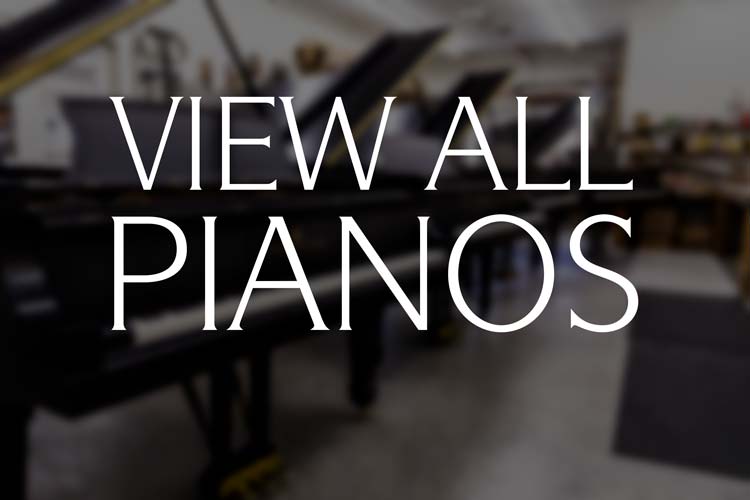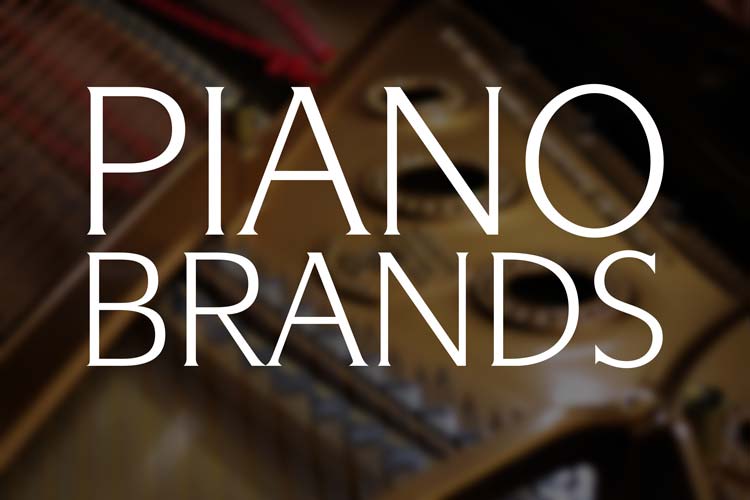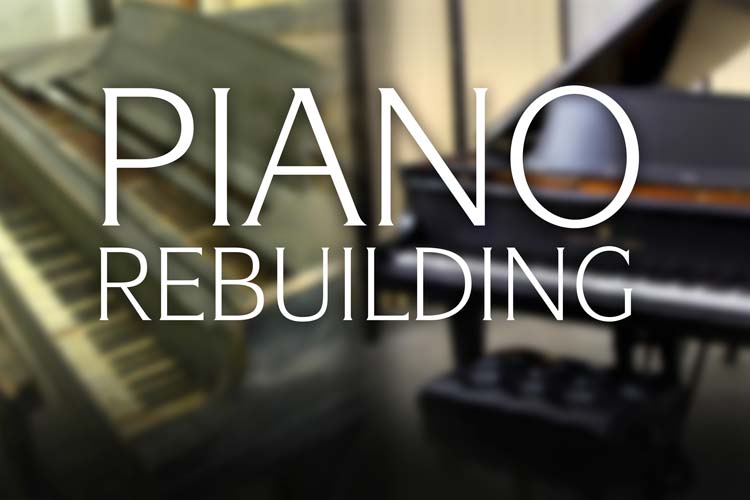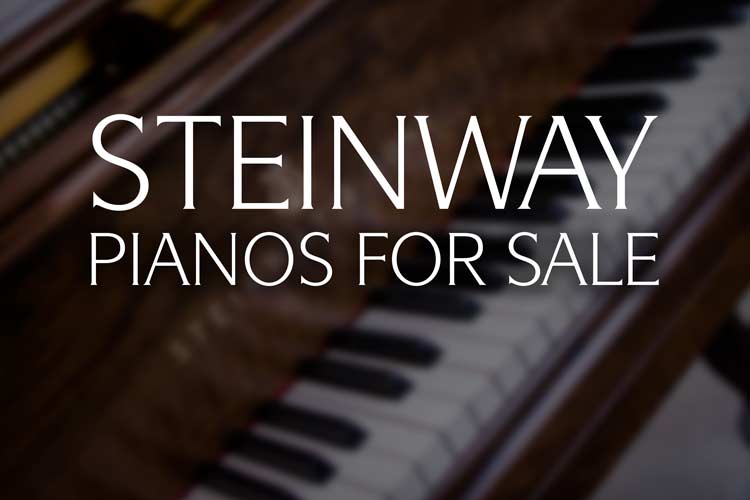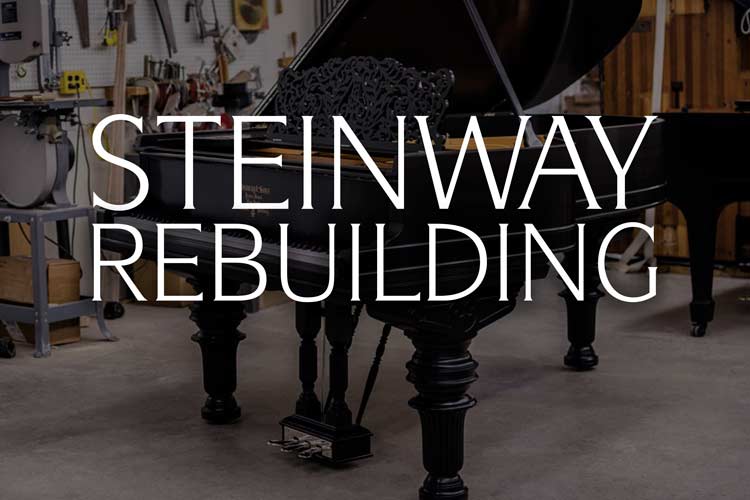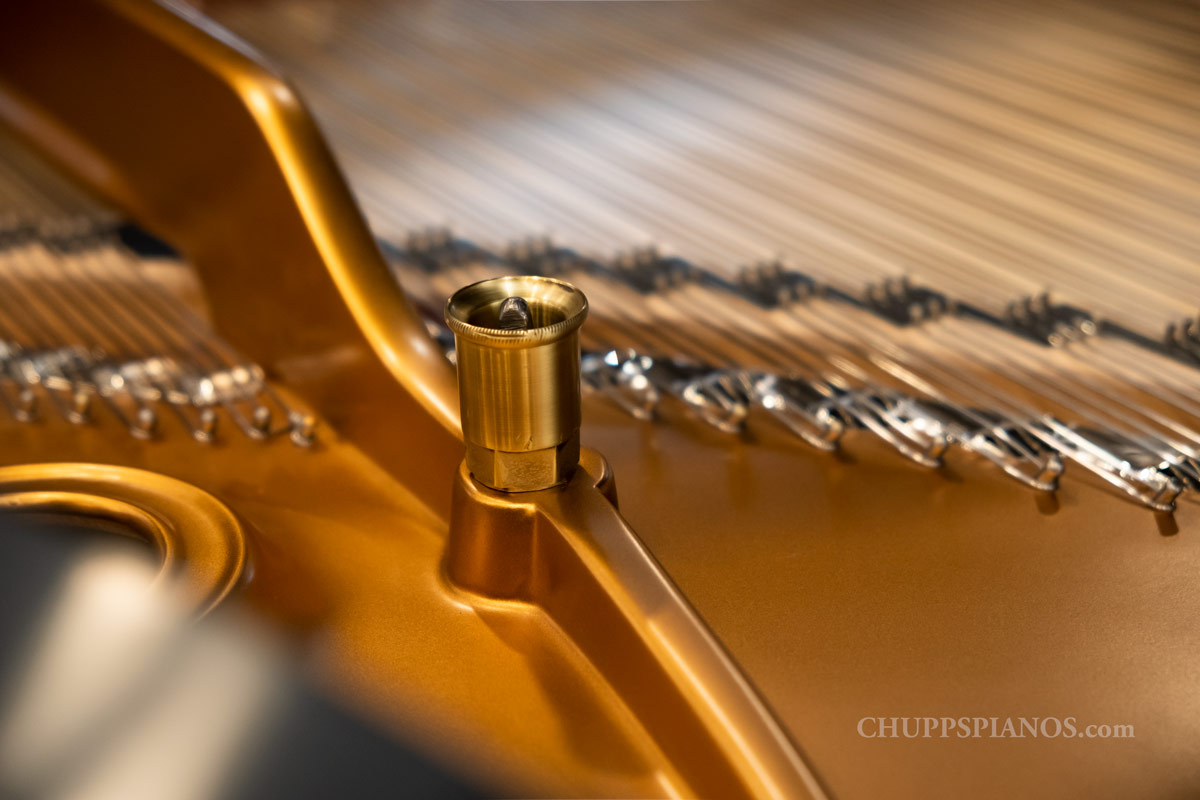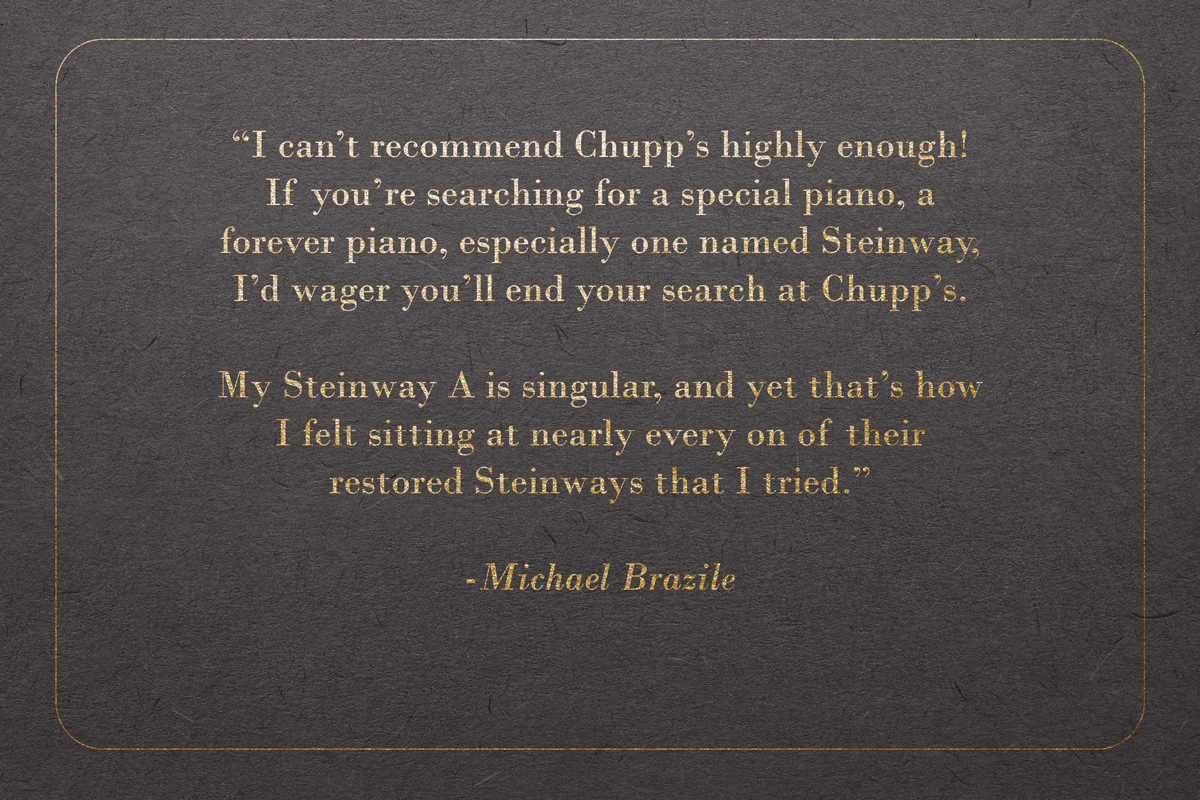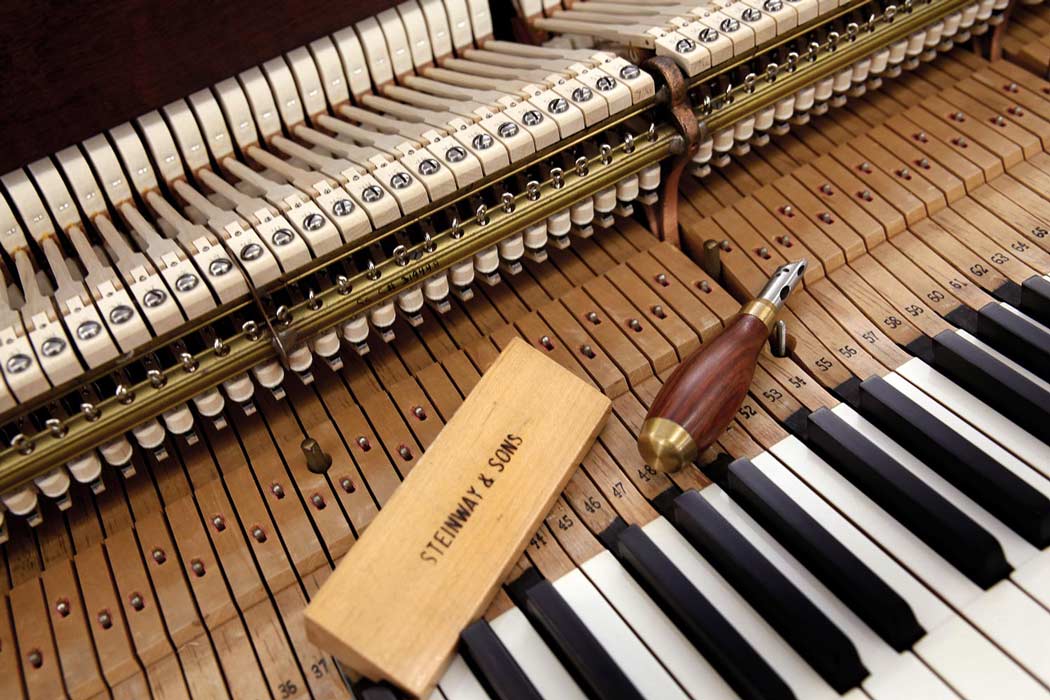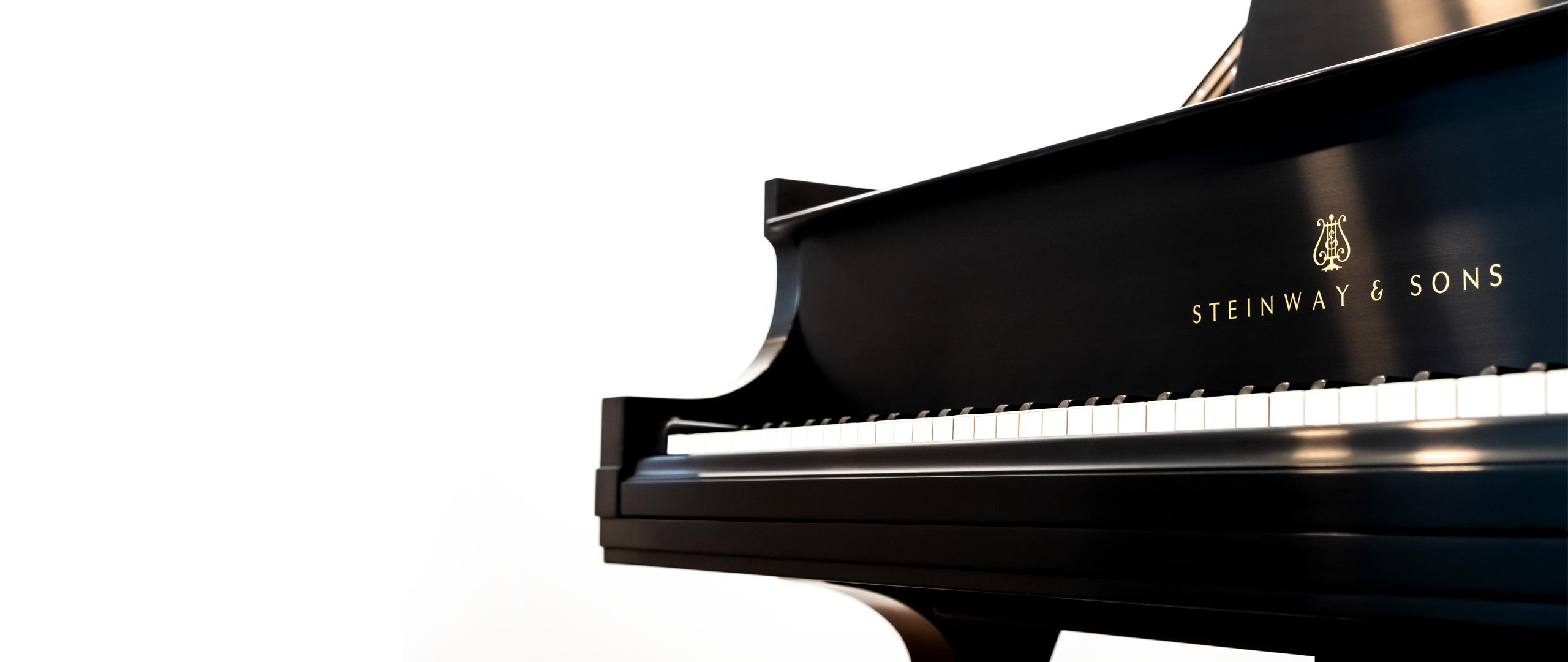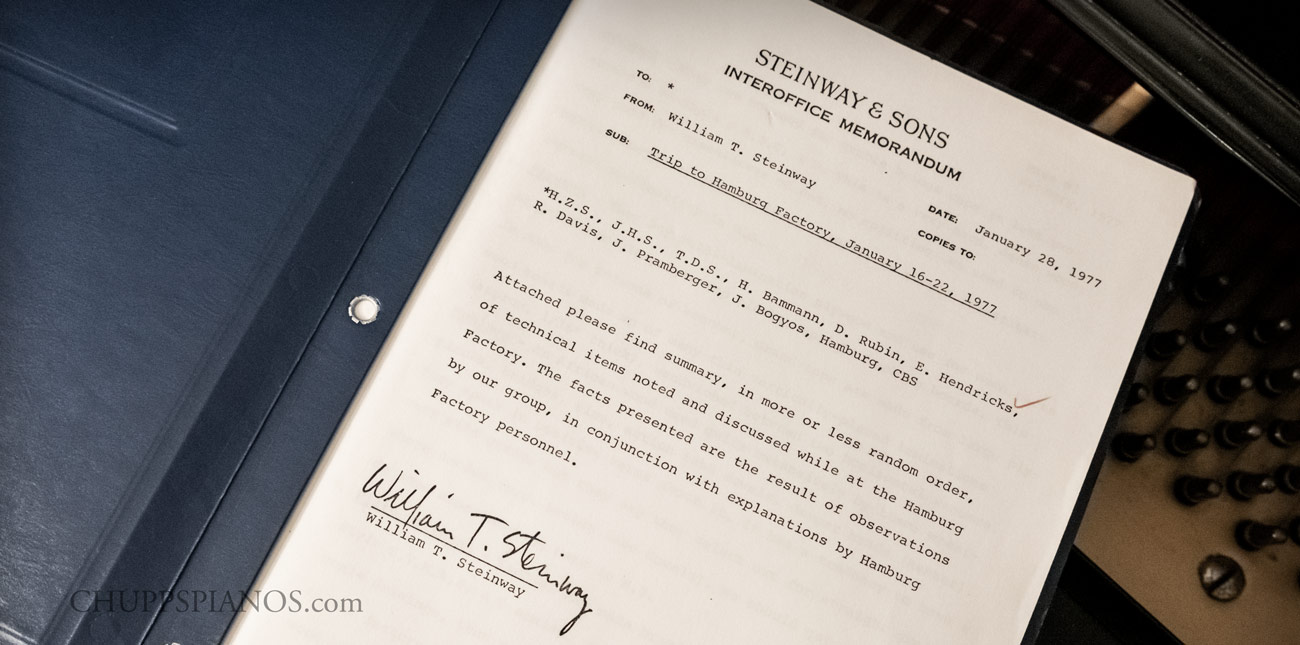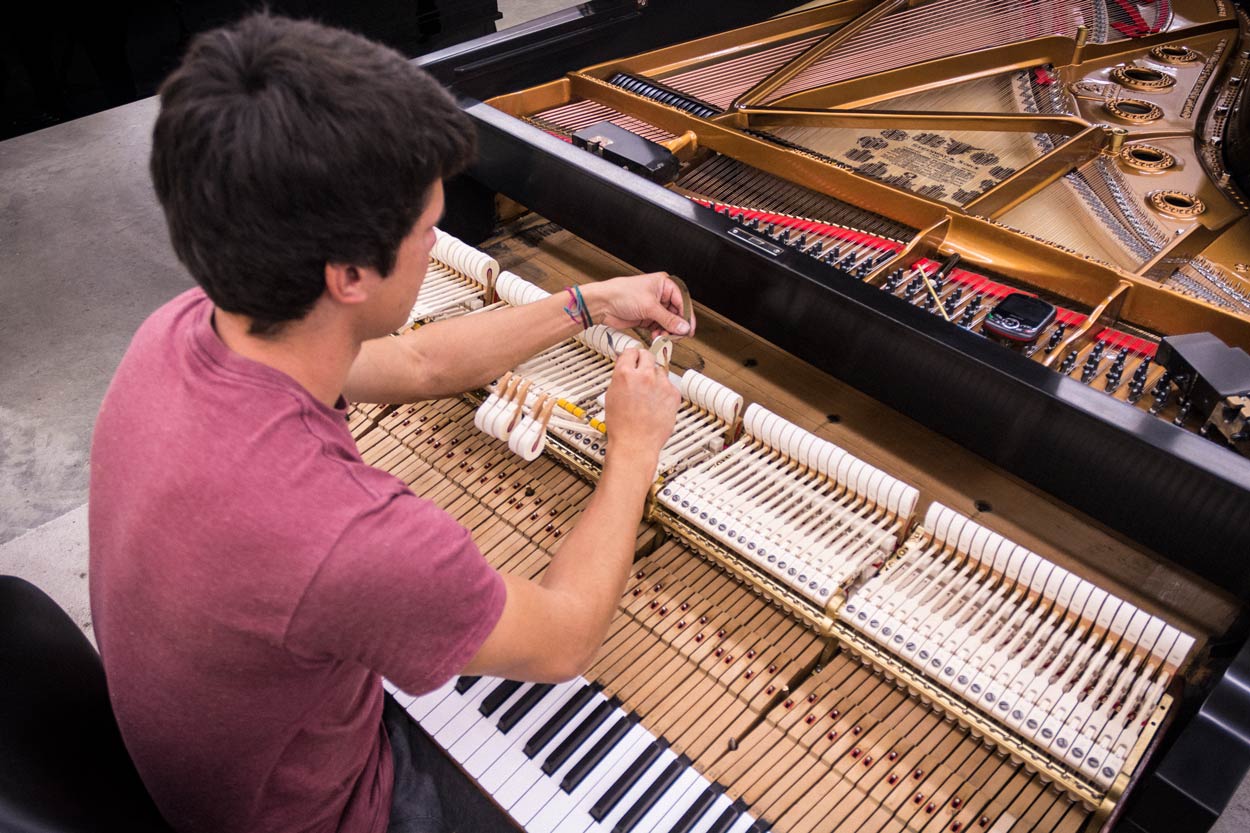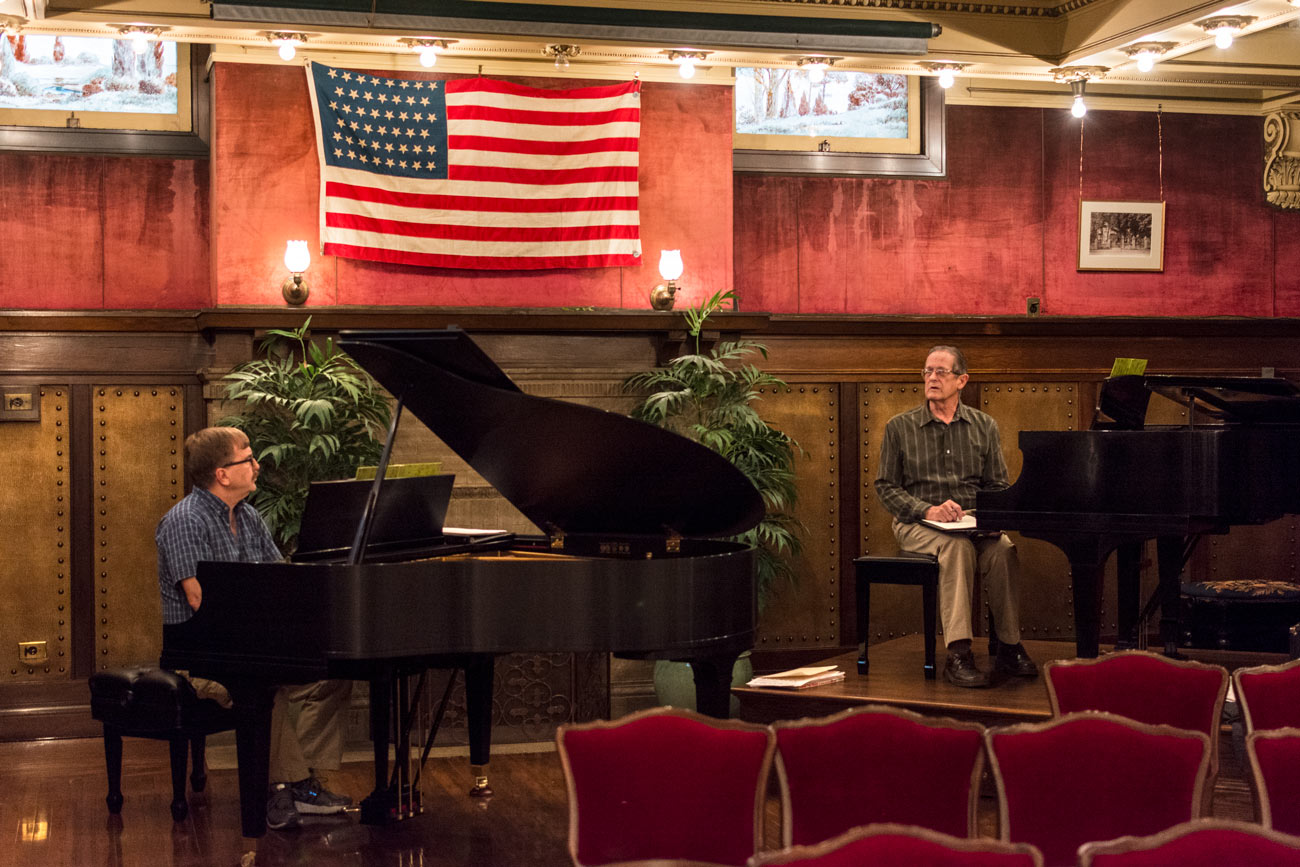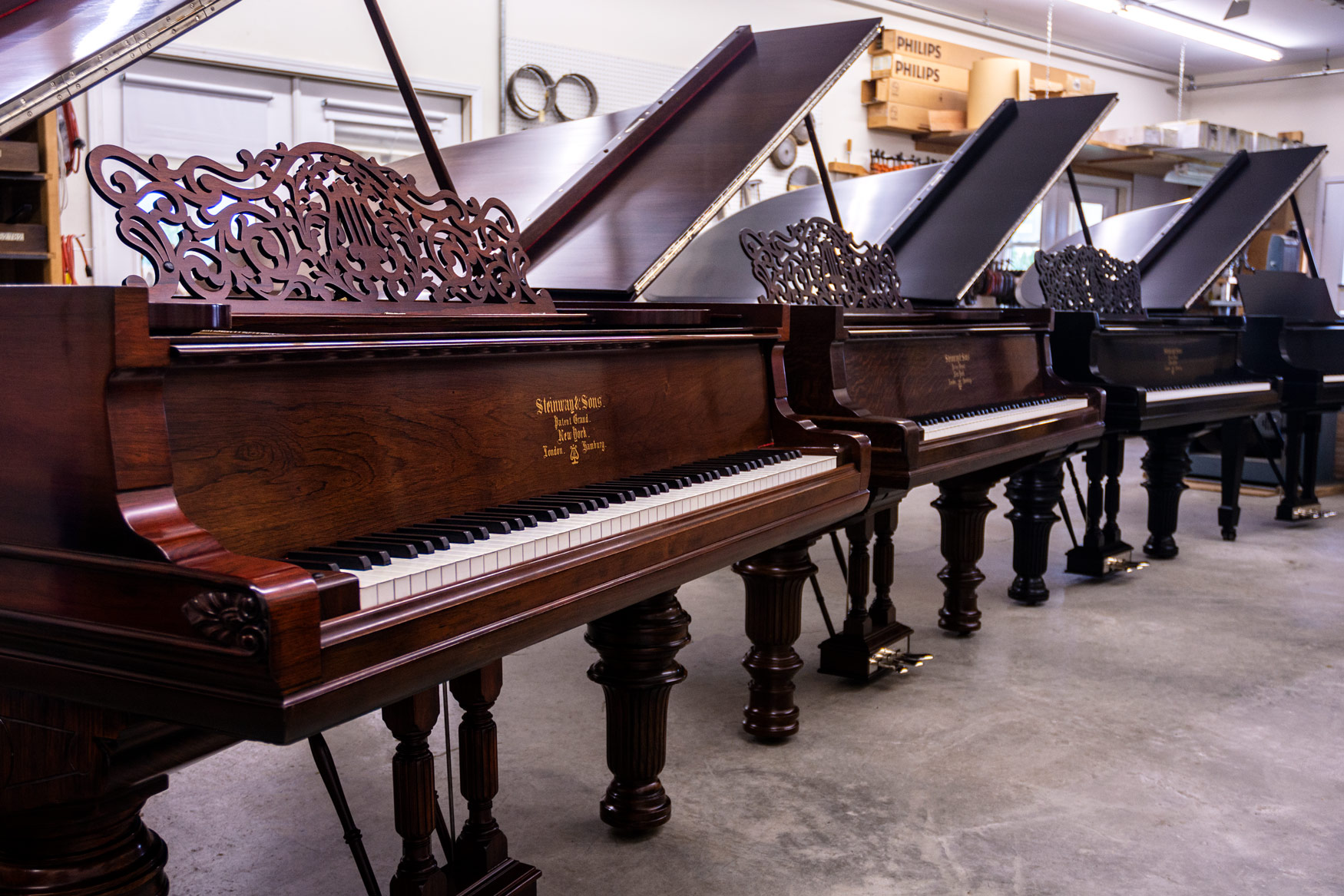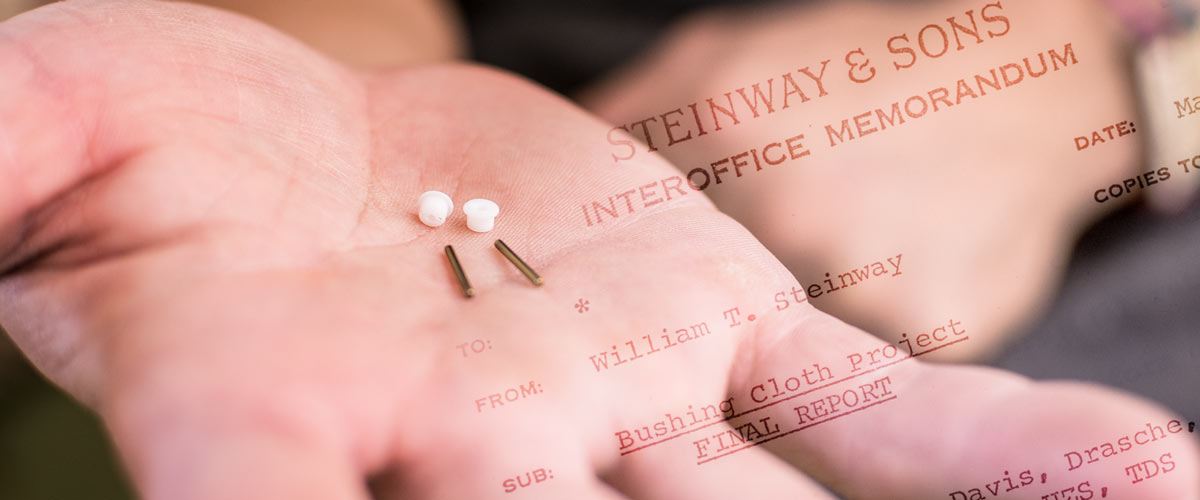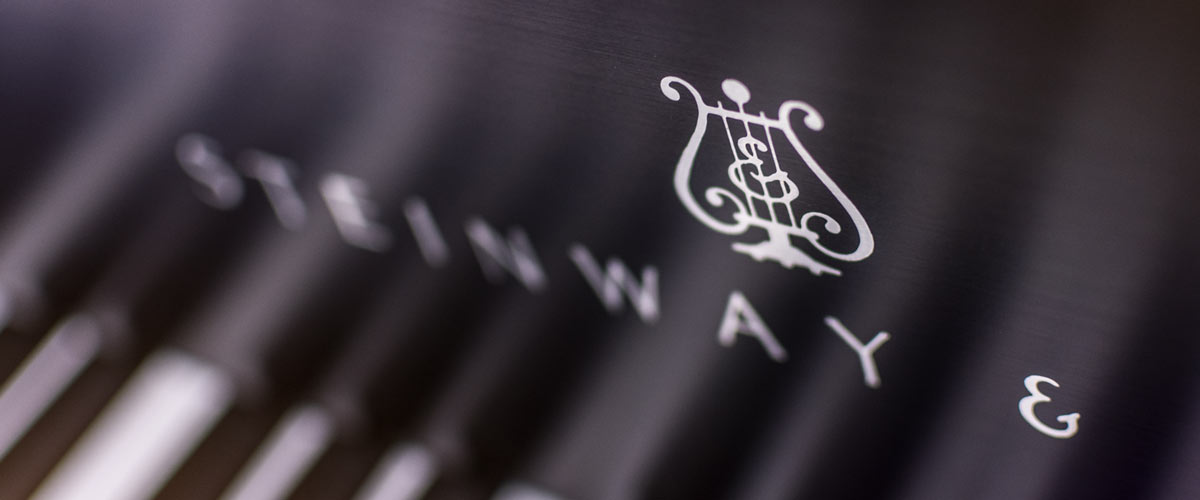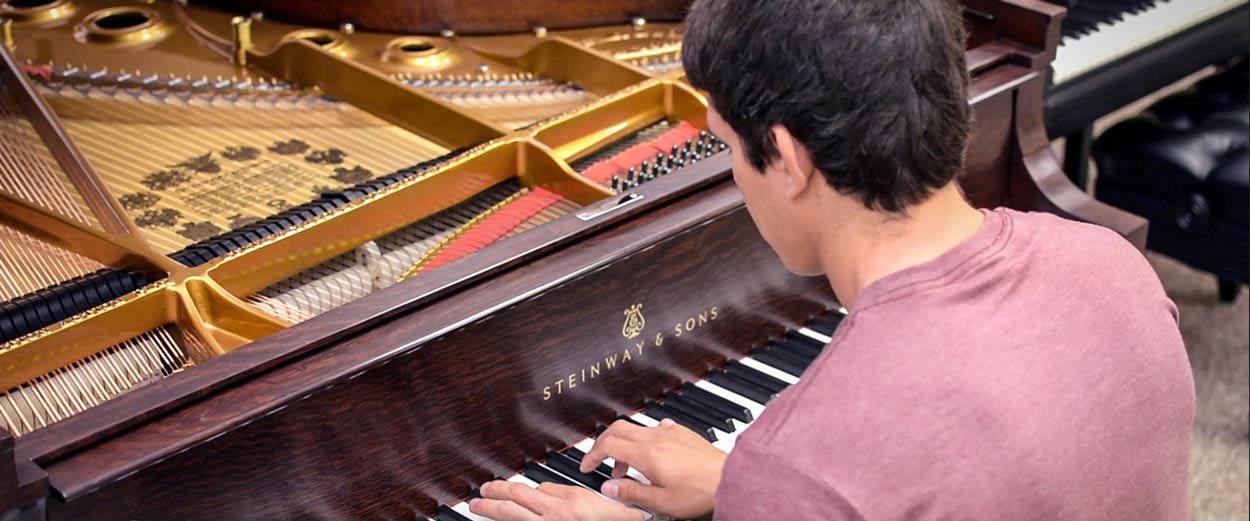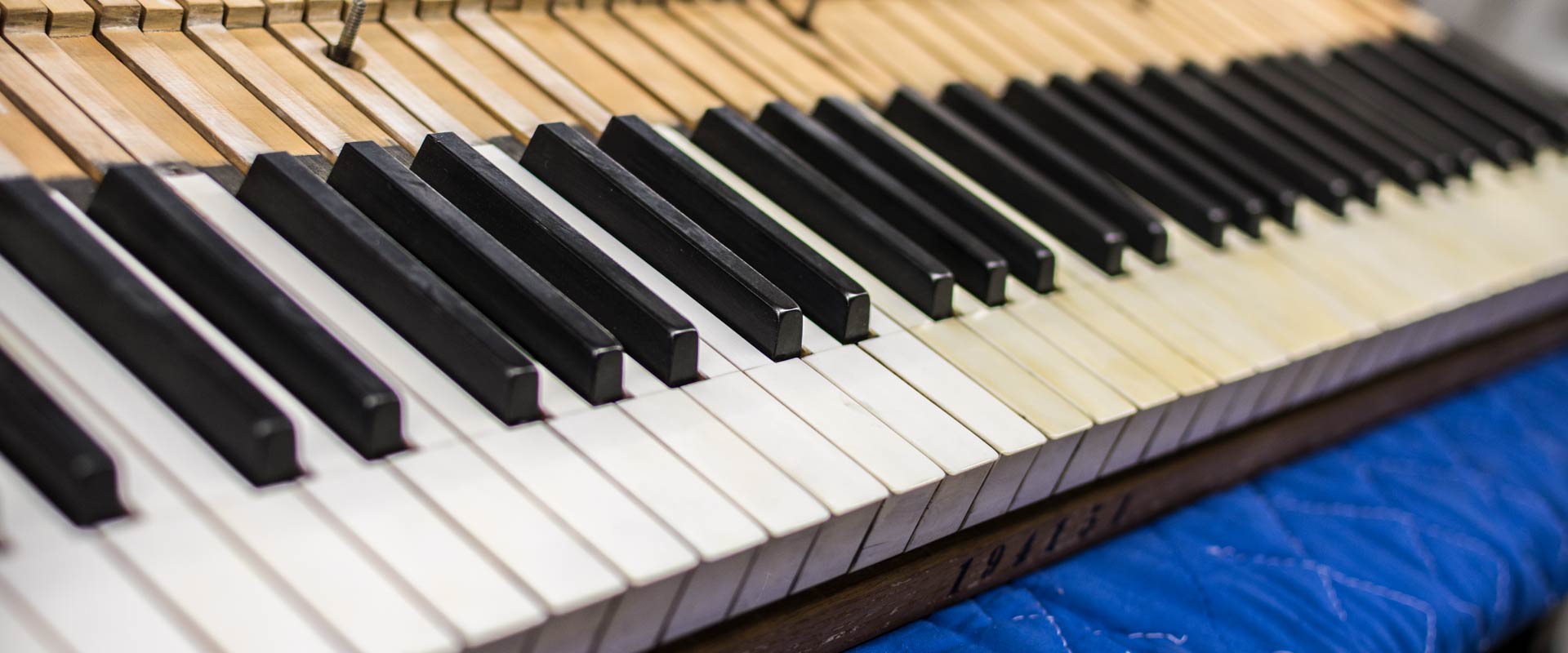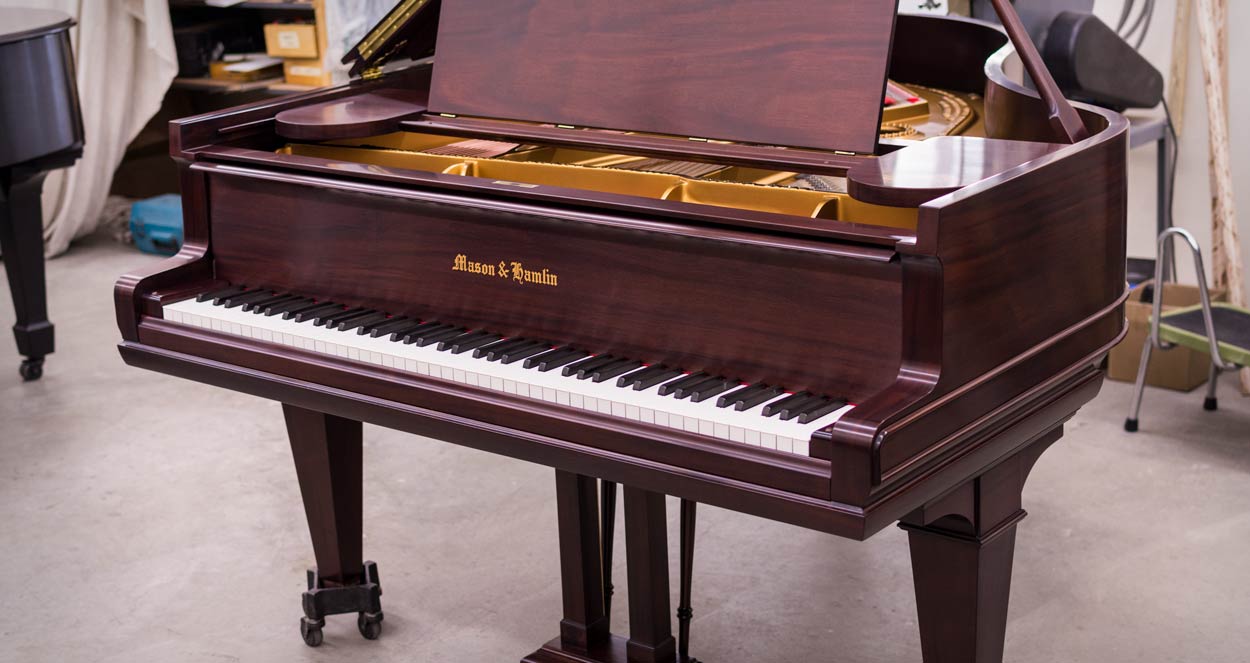“I Can’t Recommend Chupp’s (Pianos) Highly Enough!”
…“I can’t recommend Chupp’s highly enough! If you’re searching for a special piano, a forever piano, especially one named Steinway, I’d wager you’ll end your search at Chupp’s. My Steinway A is singular, and yet that’s how I felt sitting at nearly every on of their restored Steinways that I tried.” – Michael Brazile
When History is Played Personal – A Few Things to Consider When Restoring The Family Piano
Testimonial: “It is my dream piano come true.”
"The fit and finish of the case makes the 80 year old piano look like it was freshly minted from the factory..."
In the business of restoring and selling pianos, recommendations and reviews from our friends and clients is always a great encouragement. One of the things that we assist with quite often, is the selection of a piano by a client who lives well outside of our local Northern Indiana region. The team here at Chupp's Piano Service was recently able to provide a beautiful Steinway & Sons Grand Piano to one of these customers. We worked with Randall via email and phone to ensure they received an instrument that met their expectations. Our network of expert piano delivery specialists allows us to deliver across the entire country - and even overseas! Randall was kind enough to send in a letter about the piano and his experience working with Chupp's Pianos.The Hamburg Steinway Factory – A Historic Report of Differences – ft. Excerpts from a Rare Report by William T. Steinway
An Historic Glimpse Into the 70's Hamburg Steinway Factory
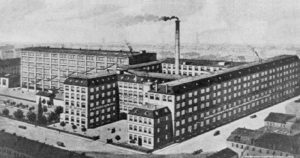 One of the most unique parts of the Steinway story, is the tail of two factories. Although with a name like Steinway (originally Steinweg), one could not be blamed for initially thinking that Steinway & Sons is a German company, transplanted to the United States. In fact, that is almost reversed. Founded in 1853 in the city of New York,Steinway & Sons was the brainchild of German immigrant Henry E. Steinway. Launching his new piano business into one of the most cutthroat and competitive businesses of his day, Henry and his offspring would quickly grow the company into one of the powerhouses of modern day music. As demand increased in the United States, demand increased overseas as well. The decision was made to open a factory overseas and the Steinway name returned to Germany - the City of Hamburg, to be exact. In 1880, C.F. Theodore and William Steinway founded the Hamburg Steinway Factory. A wholly owned venture, this new factory allowed them to avoid high import tariffs and allowed for easier distribution of their newly built pianos throughout the European market. Today, the Hamburg division continues to serve this purpose and most of the countries outside of North America are supplied with instruments crafted in Hamburg. Here in the United States, Hamburg Steinway pianos are often viewed as more 'exotic' and are known to posses a different tonal quality when compared to their New York factory brethren.
One of the most unique parts of the Steinway story, is the tail of two factories. Although with a name like Steinway (originally Steinweg), one could not be blamed for initially thinking that Steinway & Sons is a German company, transplanted to the United States. In fact, that is almost reversed. Founded in 1853 in the city of New York,Steinway & Sons was the brainchild of German immigrant Henry E. Steinway. Launching his new piano business into one of the most cutthroat and competitive businesses of his day, Henry and his offspring would quickly grow the company into one of the powerhouses of modern day music. As demand increased in the United States, demand increased overseas as well. The decision was made to open a factory overseas and the Steinway name returned to Germany - the City of Hamburg, to be exact. In 1880, C.F. Theodore and William Steinway founded the Hamburg Steinway Factory. A wholly owned venture, this new factory allowed them to avoid high import tariffs and allowed for easier distribution of their newly built pianos throughout the European market. Today, the Hamburg division continues to serve this purpose and most of the countries outside of North America are supplied with instruments crafted in Hamburg. Here in the United States, Hamburg Steinway pianos are often viewed as more 'exotic' and are known to posses a different tonal quality when compared to their New York factory brethren.
Steinway Buys Renner – What it Means for the Piano Industry
Renner Joins the Growing Family of Steinway Musical Instruments' Owned Suppliers
In July of this year, it was announced that John Paulson's Steinway Musical Instruments had completed the purchase of Louis Renner GmbH & Co. KG. Renner is widely respected as one of the finest producers of piano action parts still in existence. Numerous makes of pianos, including Hamburg Steinways use Renner parts. Below is the Steinway & Sons announcement letter and below that are our thoughts on the issue.The Baldwin: The Story of a Piano Restoration – Ruthmere Museum & Chupp’s Pianos
Partnering With The Ruthmere to Restore Local History
This historic Baldwin Model M Baby Grand Piano was fully rebuilt by Chupp’s Piano Service. Built in 1938 at the Cincinnati Baldwin piano factory, this grand piano was a family heirloom of the Deputy family, the last residents of the historic Ruthmere Mansion in Elkhart, Indiana. (In fact, one of their family portraits at the museum shows the family sitting around this very piano.) The piano is believed to have been moved out of the mansion in 1969. Recently, the Deputy family generously donated the Baldwin piano to the Ruthmere Museum, returning it to its former home. This is the story of a historic piano’s full restoration. Producer/Shooter/Director: Benjamin Rogers - Music Written & Performed by Philip Balke - Special thanks to The Ruthmere Museum of Elkhart, IN.A Walk Down Memory Lane – Four Pianos, Years of History
Four Pianos, Hundreds of Years of History
We recently had several pianos lined up in our Rebuilding Facility that spanned the near entirety of what is considered the golden age of Steinway & Sons Factory quality. When we saw what we had set up, we couldn't help but snap some pictures to share! For lack of a better word, this was just plain cool! From the early days of modern piano building to the style of instrument most popular today, it's all represented! Here is some detail regarding these fine grand pianos.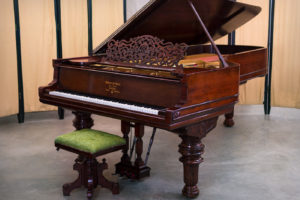 Steinway & Sons Model D #52626 was completed in early 1885. This means that construction of this piano began at the New York Steinway Factory in 1884. This is the first year that Steinway ever made what is now known as the king of concert grand pianos, the Model D! Veneered in a rich cut of rare Brazilian Rosewood and as one of the very first Model D Concert Grands ever built by Steinway, this piano marks the beginning of an era. It is a rare find indeed! The piano features a then typical round arm art case design with double narrow moldings around the case, a figured music desk with 'old-style' fretwork, hand-carved Victorian fluted flowerpot legs with hidden casters and a large box pedal lyre with carved pillars. This instrument was originally purchased for use at the DuPage County Library near Chicago, IL. This concert grand piano is currently located at our New Paris Rebuilding Facility and is available for selection and purchase.
[Click Here to Read More About This Piano.]
Steinway & Sons Model D #52626 was completed in early 1885. This means that construction of this piano began at the New York Steinway Factory in 1884. This is the first year that Steinway ever made what is now known as the king of concert grand pianos, the Model D! Veneered in a rich cut of rare Brazilian Rosewood and as one of the very first Model D Concert Grands ever built by Steinway, this piano marks the beginning of an era. It is a rare find indeed! The piano features a then typical round arm art case design with double narrow moldings around the case, a figured music desk with 'old-style' fretwork, hand-carved Victorian fluted flowerpot legs with hidden casters and a large box pedal lyre with carved pillars. This instrument was originally purchased for use at the DuPage County Library near Chicago, IL. This concert grand piano is currently located at our New Paris Rebuilding Facility and is available for selection and purchase.
[Click Here to Read More About This Piano.]
VIDEO: “How Does a Moment Last Forever” on Steinway Model B #231416
"How Does a Moment Last Forever" Cover on Steinway B #231416
Piano Technician/Pianist Philip Balke performs 'How Does a Moment Last Forever' from the live action Disney film, 'Beauty & The Beast'. Written by Tim Rice and Alan Menken. Performed on restored Steinway & Sons Model B Grand Piano #231416. This piano originally built in 1925 during the height of the piano industry's golden age. Recorded at the Chupp's Piano Showroom in Goshen, Indiana, video production by Benjamin Rogers.VIDEO: “I’m Not That Girl” from Wicked on Steinway M #227953
"Wicked" Piano Cover on Steinway M #227953
Piano Technician/Pianist Philip Balke performs 'I'm Not That Girl' from the beloved Broadway musical, 'Wicked'. Written by Stephen Schwartz, originally recorded by Idina Menzel (original song) and Kristin Chenoweth (reprise). Performed on restored Steinway & Sons Model M Grand Piano #227953. Recorded at the Chupp's Piano Showroom in Goshen, Indiana, video production by Benjamin Rogers.Teflon Bushings – The Steinway & Sons “Teflon Era”
Teflon Bushings in Steinway Pianos– The Failed Experiment
If there was one quality that marked the early days of Steinway & Sons, it was the family company’s inherent desire to invent, tweak and improve the quality of their pianos. This led to famous innovations and improvements to grand piano design that continues to be standard a century later. Almost all of the company’s patents were filed during these first years. The study of the lineage of the modern grand piano is a fascinating one, filled with stories of both success and failure. The 'Teflon Era' will forever remain an infamous time for Steinway & Sons, but one that forced the industry to adapt around new ideas and parts.
Increased Competition – Attempted Innovation
During the early 1960s, work began on another project that company leadership hoped would again boost the company’s reputation as a world leading instrument. Continued pressure from less expensive yet high-quality pianos from Japanese makers like Yamaha and Kawai began to push Steinway from their position as the North American piano king. (This battle between the ‘east and the west’ wages on even today. ) A number of their major American competitors were either long gone or in decline. A document provided to Chupp's Piano Service proves interesting. In a letter dated April 6th, 1979 to the late Ed Hendricks, a former Vice President of Marketing and owner of Hendricks’ Pianos in Chicago,....
Famous Musicians & Their Preferred Pianos – Infographic
Over the years, countless musicians have made the piano their primary musical instrument. Companies have fought tooth and nail to win the hearts (and wallets) of artists around the world. Today's big players in the concert market include Steinway & Sons, Kawai, Yamaha and Fazioli continues to make inroads. Over the years, there have been many other companies who have made fine concert instruments that continue to be cherished by pianists. Click to view an infographic highlighting just a few of the artists who continue to make the piano come alive and learn what pianos they prefer to use on the concert stage.
The Value of a Restored, Vintage Piano Goes Beyond the Price
The Sounds of History
A fully restored, vintage Steinway & Sons, Mason & Hamlin or other fine make of grand piano offers a great value. Although the lower price tag, when compared to a brand new, one is a component of that, this value goes far deeper. During the height of the piano industry, craftsmanship in North American piano factories was at its peak. Hundreds of companies, thousands of pianos and countless man hours resulted in the refinement of the piano as a musical instrument. As the premier entertainment and luxury item available at that time, everyone just had to own a piano! Advancements in plate design, action geometry, rim pressing and more changes piled on top of each other. Out of the intensity of the 'golden age' of piano making came some of the finest instruments ever built.Video: Restored Art Case Steinway Grand Pianos – Oak, Rosewood & More
Vintage Art Case Grand Pianos - Video Demos
The piano has long been a striking combination between its function as a musical instrument and as a piece of visual art. This was especially true during the early 'golden era' of the piano manufacturing industry. Steinway & Sons was among the many companies battling for supremacy during these competitive years. Experienced craftsmen combined with easy access to the finest woods and other materials resulted in some of the finest playing - and looking pianos ever crafted. Although today's new Steinways are rarely seen outside of their 'traditional' more modern design, expert restoration work allows musicians and appreciators of fine art the chance to experience the characteristics that have made vintage art case pianos so treasured. Below are several videos we have produced highlighting the work of the craftsmen and technicians here at Chupp's Piano Service, Inc.Steinway & Sons Model A-3 Grand Piano #188826 - Quarter Sawn Oak, Sketch 380 Cabinet.
Covered in a beautiful Quarter Sawn Oak veneer, this rare Steinway was built in 1917. Fully rebuilt by us this piano features a new solid spruce soundboard, new hard rock maple pinblock, a fully rebuilt action and much more. Quarter Sawn Oak was rarely utilized on Steinway grand pianos. This instrument is currently featured at our Goshen, IN. Piano Showroom alongside a number of other 'Crown Jewel' style grand pianos.What’s the Difference: Piano Tuning vs. Piano Maintenance/Repair
What’s the Difference: Tuning vs. Repair/Restoration
Question: “I am considering purchasing an old piano I found online. The owner says it is in good shape, but it needs tuned. Do you think it will need more than that, or by tuning do they mean restoration or repairs as well?”This is a question we hear quite a bit from people who have questions regarding the purchase of a piano. The term ‘tuning’ seems to have become a catch-all definition for work done on a piano. It often gets confused with work that would fall under restoration, basic maintenance, or repairs. Often, pianos that ‘just need tuning’ require much more work than that to even make them playable. To understand the difference between tuning and piano repair/restoration it is good to know the definitions.

